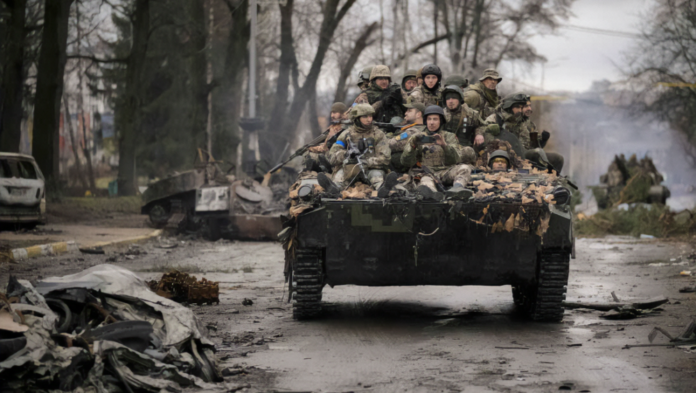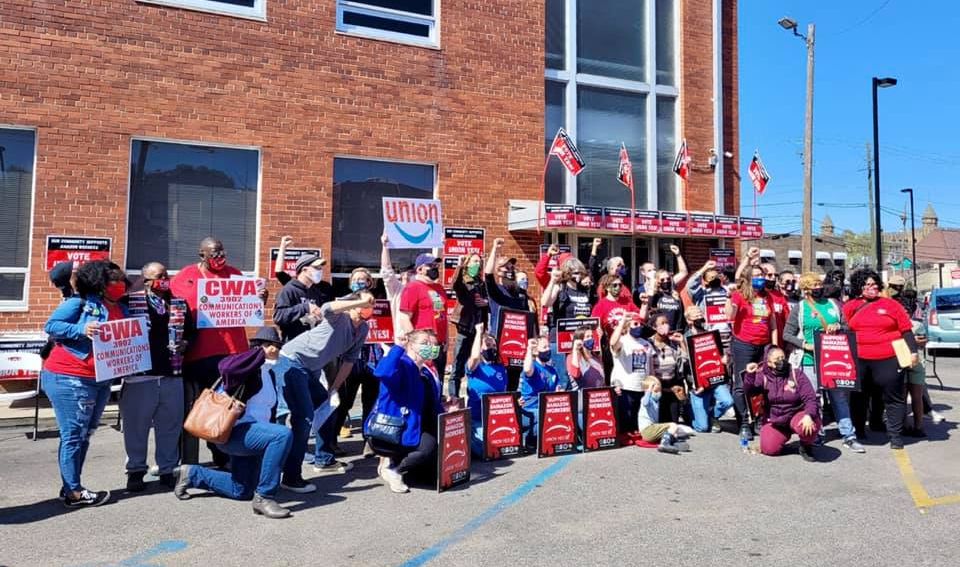Per-Åke Westerlund is a member of the ISA International Executive
Following seven months of a Russian military offensive which has made limited advances, and almost 2.5 years of all-out war, the inter-imperialist character of the conflict in Ukraine is deepening, as is the risk of escalation. US and Western imperialism are reinforcing their commitments on the side of Ukraine while the China-Russia bloc is being further fortified.
The war is a long-term confrontation with much at stake for all involved. In the last few weeks, Macron has raised the possibility of sending troops to Ukraine, with small numbers already being sent for “training” purposes. Biden and Olaf Scholz have crossed another “red line” by changing their previous positions, now allowing US and German weapons to be used against targets inside Russia.
Putin has replied by carrying out “tactical” nuclear drills, threatening to arm other countries against the US-led Western bloc and sending military ships to Cuba and Venezuela. US Secretary of state Blinken and the UK government have threatened the Chinese regime over its support to Russia. In Europe, government after government is sending alarming signals about possible future Russian attacks. At the G7 summit, the leaders of the Western imperialist bloc will discuss leveling Russia-type sanctions against Chinese banks — albeit smaller ones, wanting to avoid sparking a global financial crisis.
The military onslaught on Gaza put the war in Ukraine into the shadows for a while, and raised new questions whether the Western powers could support both Israel and Ukraine. But the importance of a war in Europe has not diminished. Even limited victories for Russia would be a major blow-back for US imperialism and strengthen the China-led bloc. In light of the growing resentment and hatred around the world against the US support for Israel, it’s even more important for Washington to avoid this from happening.
In order to prioritize Ukraine again, this week there is both the Ukraine “recovery conference” in Berlin and the “peace conference” in Switzerland, to be attended by representatives for 90 governments. In addition, the G7 summit in Italy, also this week, will provide Ukraine with another 50 billion US dollars.
This follows the delayed US aid package of 61 billion dollars finally approved in April and huge new promises and arms deliveries from European governments. The Ukrainian military is promised more Patriot systems from Spain, Norway and the US, and the total of F16 jets promised is now 80.
For months, there has been speculation of a Russian summer offensive, able to break through Ukrainian defence lines equipped with limited shells and ammunition. While Russian offensives have already taken far more territory than Ukraine’s failed 2023 offensive, new arms deliveries make major new Russian breakthroughs look less likely.
Russian Advances
Early this year, “Putin and the Russian military also appear to have concluded that Ukraine will be unable to regain territories the Russians can seize and that creeping Russian advances even at high cost will therefore ultimately lead to overall Russian success”, wrote the Institute for Study of War, a US think tank that produces daily updates from the war.
By the end of last year, then-commander of the Ukrainian army Zaluzhnyi said the war had reached a stalemate. Artillery and drones were used for attacks with a high number of casualties, but no side was advancing. When Russian forces made advances west of Donetsk city (seizing Marinka) and in Zaporizhia, some politicians, particularly Republicans in the US, raised opposition to further aid to Ukraine. Around the new year, the Russian army also stepped up attacks on cities with drones, missiles and “glide bombs” (improved versions of old Soviet bombs).
A new Russian offensive on Avdiivka, a city in Donetsk Oblast, started in October. The city was seized on 17 February after Ukrainian troops evacuated. The Ukrainian army reported over 20,000 deaths in the defence of Avdiivka and estimates the Russian army lost twice as many. The fighting here, as in Bakhmut previously, is reminiscent of WW1.
At this stage of the war, the Russian army had a six-fold advantage in terms of artillery resources and launched several parallel offensives, the main one at Chasiv Yar close to Bakhmut, an important strategic target it could still conquer.
Putin believed he was on a winning path, and the Ukrainian government and army increasingly feared defeats. “Zelensky reportedly told US Speaker of the House Mike Johnson in December 2023 that Ukrainian forces would be able to ‘hold out’ until March or April 2024 without additional US security assistance”, ISW reports.
US Aid
These alarming reports increased the pressure on the White House to reach a deal in the House of Representatives for a package to Ukraine. Even Donald Trump said “the survival of Ukraine is important to the United States, a shift in tone days before the Republican-led U.S. House of Representatives is due to vote on a $61 billion aid package”, Reuters reported. However, to placate his supporters and distance himself from Biden, Trump did not formally endorse the package and attacked European governments for not supporting Ukraine as much as the US.
This package was not expected by Putin, who believed he had undermined the support from Ukrainian allies, according to ISW. Moscow’s conclusion was that the Russian offensive had to increase pace, before new arms arrived.
This included the increased attacks and a new invasion in Kharkiv Oblast. The aim at this stage was to take control over the border area. The Putin regime did not believe it could seize and control Kharkiv city (Ukraine’s second largest), at least not now.
Russian attacks continue, and its strategy seems to be continued “meat grinder” battles, suffering huge losses but slowly advancing. Russia’s economy and production is geared towards the war, and unofficial mobilisation delivers new troops. The quality of the actions of the Russian army has improved a lot during 2.5 years of war, also according to Ukrainian intelligence. In using drones and electronic warfare, the Russian troops have the upper hand.
Putin has claimed that Russia has retaken 47 villages and towns so far this year, including some Ukraine won last year. None of them are decisive for the outcome of the war, but are important for propaganda and morale.
Ukrainian Offensive 2025?
The new arms now promised will drastically improve the Ukrainian defence. There is already talk of a new Ukrainian offensive in 2025, partly based on the US decision in May to allow US arms to be used against targets in Russia, something previously regarded as an unwanted escalation.
The most successful Ukrainian attacks have been on Crimea, regarded by Putin as a Russian stronghold. “Ukrainian drones and missiles may have taken out of action as much as half of the once formidable Black Sea Fleet”, the Financial Times reported. Most of the vessels used for military transport have been destroyed. The Kerch bridge between Russia and Crimea could be the next target of major attacks.
Changes in Ukraine
Ukraine will get new military resources, but the war has huge costs, which are having increasing effects within the country. Since the Russian invasion in February 2022 big parts of the country have been destroyed. Over 10,000 civilians have been killed, plus hundreds of thousands soldiers on both sides. 10 million Ukrainians are refugees, six million of them are abroad. 1.5 million family homes have been destroyed. There is a shortage of heating and electricity in big parts of the country. The Russian aerial attacks this year are estimated to have destroyed half of the country’s electricity production.
Despite there being no end of the war in sight, Russian military offensives, aerial attacks with drones and missiles, and an economy that has shrunk by one-third, opinion polls show a big majority of Ukrainians still support the war. But the mood has changed.
“Morale among troops is grim, ground down by relentless bombardment, a lack of advanced weapons, and losses on the battlefield. In cities hundreds of miles away from the front, the crowds of young men who lined up to join the army in the war’s early months have disappeared. Nowadays, eligible would-be recruits dodge the draft and spend their afternoons in nightclubs instead”, reported politico.eu from Kyiv in April.
During the spring, news of Russian advances came in parallel with reports of military aid being stalled and increasing strains in the Ukrainian ruling layer. President Zelensky’s rule is increasingly bonapartist, with elections postponed, the army commander sacked and “a series of firings, resignations and reshuffles directed by Zelenskyy in recent months” (Financial Times). A new law making military duty compulsory for all aged 25–60 years is deeply unpopular.
War Without End?
The general and military theoretician, Carl von Clausewitz, described wars as unpredictable, with possible turning points driven by their own contradictions. This has been confirmed by the war in Ukraine, with surprising advances and expected offensives failing. In June 2024 the war is far from over, with new possible turning points.
Biden and European politicians stress how the Ukrainian army is “fighting for us”, i.e.as a proxy for Western imperialism. This, the inter-imperialist proxy war, is the main feature of the war, as concluded by International Socialist Alternative after the Russian invasion in 2022. In Ukraine, and among much of the general public in Europe, the war is seen as one of defence against Russian aggression. This is reinforced by the propaganda from governments. On D-day (June 6), Biden repeated the war was ‘democracy versus autocracy’. This point is made by a president that is closely allied with the Israeli military as well as the dictatorships in Egypt and Saudi Arabia over the genocidal war in Gaza.
The wars in Ukraine and Gaza have strengthened the ties within the China-led bloc. Sharply increased trade with China has offered a lifeline to Putin. Iran is supplying Russia with drones and bombs, and imports advanced Russian weaponry. The Ukraine war has also broken the isolation of North Korea. “Russia has turned to North Korea, securing more than a million rounds of artillery shells as well as ballistic missiles” (Financial Times). Putin is visiting Pyongyang in June, following a trip to Beijing in May after his “election victory”.
In Europe, militarisation is an overall theme in politicians’ rhetoric, pointing to a need to arm against the threat from Russia. All states are increasing military expenditure, and the demands are rising faster. “Europe has only a fraction of the air defence capabilities needed to protect its eastern flank, according to NATO’s own calculations, laying bare the scale of the continent’s vulnerabilities”, the Financial Times reported. “Some European leaders and military officials have warned that Russia might have the capability to attack a Nato member by the end of the decade”.
Nato exercises are more frequent and larger than ever, at the same time as Germany and France have launched new European military cooperation initiatives. Militarisation is linked to official politics becoming more reactionary, including more authoritarian measures and restrictions in democratic rights.
China’ role in providing machinery and tech needed by the Russian forces has come under attack from the US and UK governments especially. Sanctions have been imposed on Chinese companies. This is likely to be stepped up, with possible sanctions against Chinese banks
The wars in Ukraine and Gaza have brought inter-imperialist bloc confrontations to a new level. They underline the deep crises of the capitalist and imperialist system. Socialists campaign and mobilise against wars and militarisation, pointing to the international working class as the only force capable of stopping the trajectory towards more wars and repression.
Building the organization, power and political independence of the working class in Ukraine, Russia and internationally is the crucial task facing socialists today. New and existing working class organizations must take up the struggle against war and imperialism, with a programme including opposition to forced military service, protection and rights for all war refugees, and fighting for investment in jobs, homes, public services and fighting the climate crisis, instead of pouring endless billions into the war machine.
The ISA statement published on the first day of the war on Ukraine demanded Russian troops out of Ukraine, the right for Ukrainians to decide their own future and opposed NATO/Western imperialism. It concluded: “This war is not in the interest of workers and youth, wherever they live. It’s about geopolitical and economic imperialist ambitions. ISA will oppose the war wherever we are present, in Russia, the USA, Ukraine and elsewhere.”
This programme is even more relevant today, after 2.5 years of slaughter.




